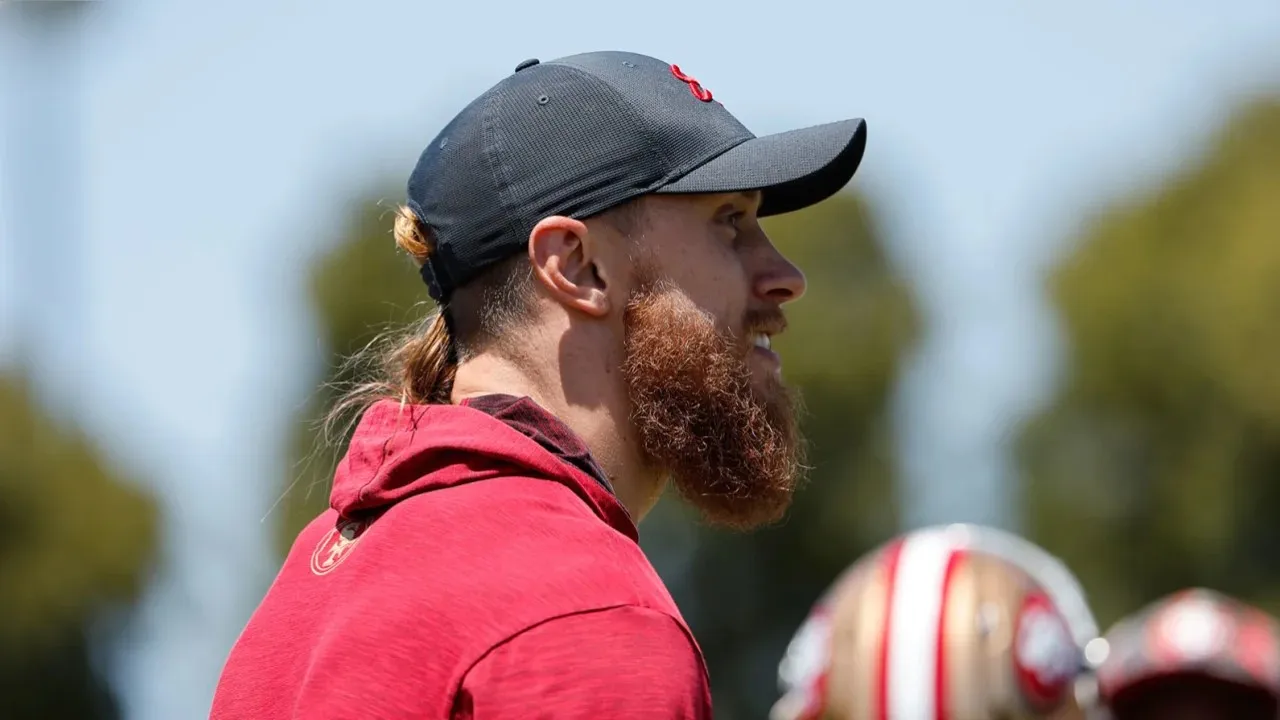It’s also trending among top offenses in the league

Success in the modern NFL is founded on passing the ball well. It’s a passing league and the rules have changed over the years and decades to favor passing. And over the years the use of 11 personnel (3 wide receivers) has become the most used offensive personnel group. Most teams use it at least half of all offensive snaps and some use it as often as 90%, but the average this season is 60.9%. For the Minnesota Vikings, they’ve used 11 personnel on a nearly average 56.9% of their offensive snaps.
The longstanding counter to 11 personnel usage offensively has been the use of nickel personnel defensively, where a defensive back replaces a linebacker, giving the defense three cornerbacks to counter the three wide receivers on offense.
But in recent years the rise of two-deep or split safety shell coverages to limit chunk passing plays has made the use of 11 personnel less effective. In fact, the league average EPA/play in 11 personnel has been negative for the last three seasons. By contrast, EPA/play in 12 personnel is positive this year and has been in two of the last three seasons.
But more importantly, for offenses able to pass well from 12 personnel, the gains in terms of EPA/play have significantly outpaced the best in 11 personnel. In EPA/play terms, the top ten 11 personnel offenses have averaged 0.18 EPA/pass whereas the top ten 12 personnel offenses have averaged 0.34 EPA/pass - nearly twice that of 11 personnel.
So How Can 12 Personnel Help the Vikings?
The Vikings have not done as well this year in 11 personnel, ranking 15th with an EPA/pass of 0.00. That’s a whopping 0.01 better than league average but given the receiving weapons the Vikings have at their disposal, and that the Darnold-to-Jefferson connection has been the most potent in the league so far this season from an EPA standpoint, it really isn’t great.
Worse, 11 personnel has been a disaster in the red zone for the Vikings. They rank 27th in EPA/pass in the red zone with 11 personnel at -0.48.
What’s happened is that defenses have begun using split safety shell coverages more often against the Vikings, which has allowed them to crowd Jefferson and more generally limit the Vikings’ chunk plays, especially in more recent games. That culminated in the Jaguars game when they used split safety coverage over 90% of the time.
And in the red zone, teams are seeing that the Vikings rank 6th in passing touchdowns, but 30th in rushing touchdowns, so they’re playing coverage against the Vikings in the red zone betting they won’t be able to run it in. That’s led to a deteriorating red zone TD conversion percentage for the Vikings, which is now down to 19th at 53.33%.
:no_upscale()/cdn.vox-cdn.com/uploads/chorus_asset/file/25736288/Screenshot_2024_11_15_211223.png)
The good news is that the Vikings have the 9th highest EPA/pass in 12 personnel at 0.26 and rank 4th in the red zone at 0.9 using 12 personnel
The thing is, the Vikings use 12 personnel below league average in the red zone at 19% (league average is 21.3%), and only slightly above average overall at 23.6% compared to the league average of 21.5%. Some of the top offenses in 12 personnel are using it on 30%+ of their snaps so far this season, and an even higher percentage in the red zone.
The Vikings could do that too.
In fairness to Kevin O’Connell, he only just recently got T.J. Hockenson back, so the prospect of ramping up double tight end sets may not have been as attractive with Johnny Mundt when it comes to also playing your best eleven as much as possible.
But against the Jaguars last Sunday, the Vikings used more double tight end sets, in part to either force the Jaguars into single-high safety coverage (which Darnold and Jefferson are more effective against) or gain the advantage in running the ball or targeting underneath routes in front of the safeties- often to tight ends. They also had success running the ball out of 12 personnel as well.
Overall, using 12 personnel should be a win-win-win for the Vikings’ offense.
First, the Vikings have the highest graded double tight end combo in the league according to PFF, with Hockenson ranked 3rd and Oliver 6th. Hockenson has the 5th highest yards per route run (1.83) after his first two games among tight ends, while Oliver has the 2nd highest passer rating when targeted (146.2). So, as receivers they’re both targets to have on the field. Oliver has shown in recent games how underrated he is as a receiver.
Secondly, should opposing defenses continue to use split safety shell coverages and double Jefferson, using 12 personnel will give the Vikings the numbers advantage in the box in the running game, which in turn may allow them to have better production running the ball, including more explosive runs.
Third, using 12 personnel doesn’t take Justin Jefferson off the field. If the defense moves to single safety coverage, that could open things up a bit for Jefferson. Or, the Vikings could also work Jefferson on some underneath routes to get him the ball in yards-after-catch situations.
Either way, using 12 personnel can more effectively present a ‘pick your poison’ approach to opposing defenses. Whether wide receivers Jefferson and Addison/Nailor, tight ends Hockenson and Oliver, or running backs Aaron Jones and Cam Akers, the Vikings have weapons to beat opposing defenses whatever they plan to dial up to stop them.
We’ll see if Kevin O’Connell uses more 12 personnel in the future, beginning with the Titans game on Sunday, to drive efficiency and scoring on the offensive side of the ball.
Stay tuned.



